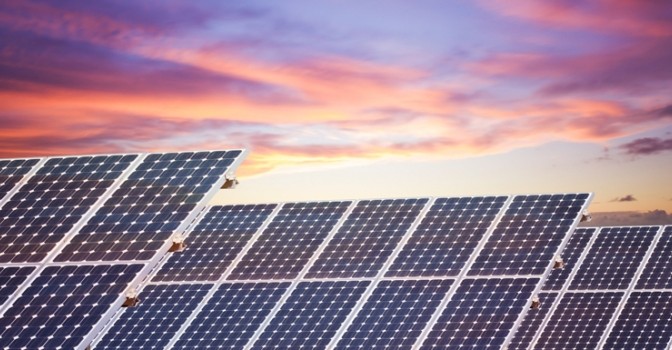Set to install an impressive 1.5 gigawatts (GW) of photovoltaic (PV) capacity within a six-year period through 2018, Central America is attracting attention from PV developers from around the world, according to a new report from IHS Technology (NYSE: IHS).
This year, total PV capacity for the six countries of Costa Rica, El Salvador, Guatemala, Honduras, Nicaragua and Panama is forecast to reach 22 megawatts (MW), up from 6 MW last year. A gigantic leap is then expected to take place in 2015 when PV capacity bounds up to 243 MW, as shown in the attached figure. But it is in the following three years when the solar market will make its greatest strides in the region, with aggregate PV capacity from 2016-18 accounting for a massive 81 percent of the six-year projected total.
IHS expects that total installations in the region will amount to 1.5 GW for the period from 2012 through 2018.
Overall, the region’s current PV pipeline of planned utility-scale projects amounts to 1.3 GW, of which half of the projects have signed power purchase agreements (PPA) on the back of enhanced policy support for solar renewable energy. The pipeline is expected to grow now that a couple of tenders have ignited the market, and developers are testing the waters to access new project opportunities.
To be sure, the region already has a high share of renewable power generation. However, PV deployment is still minimal at present.
“About 70 percent of the electricity generated in Central America already comes from renewable sources, mainly hydro,” said Josefin Berg, senior analyst for solar demand at IHS. “Yet over the past few years, increasing power demand has been met with new thermal generation thanks to power generated from oil, coal and gas, increasing reliance on fossil fuel imports. To counteract this and to avoid future volatility in electricity pricing, governments have begun supporting the controlled deployment of renewables.”
A solar milestone arrived this year in Central America when El Salvador awarded 94 megawatts (MW) of PV in a tender that originally targeted a much smaller level amounting to 60 MW of PV together with an additional 40 MW of wind as part of the original mix. Other countries where policy makers have pushed for more large-scale PV projects include Guatemala and Honduras.
The long-term deployment of PV and other power-generation sources hinges on the rollout of the Sistema de Interconexión Eléctrica de los Países de América Central (SIEPAC), a project tasked with interconnecting the power grids of the six Central American nations. Over the past year, the electricity grids in the region have been linked via the 1,800-kilometer (1,118-mile)-long SIEPAC transmission line project, which will also enhance the grid’s ability to absorb more renewables. Just the same, PV policy and demand growth will continue to vary among countries in Central America, as the region’s markets differ greatly in power market structure and regulation.
These findings are available in the latest edition of the “Emerging PV Markets Tracker” report, from the Power & Energy service of IHS Technology.
Price competition favors large utility-scale PV projects
Via tenders, regulators in El Salvador, Guatemala and Panama are looking to blend in affordable renewable power in the electricity mix.
The bid prices for the three projects awarded in El Salvador ranged from $102 per megawatt-hour (MWh) to $123 per MWh. In the quest for winning bid prices, developers are targeting projects sized above 10 MW, leaving the awarded capacity in the hands of a few companies. All told, three companies shared the awarded 94 MW in El Salvador.
An equal number of companies—three— took home the 85 MW awarded in Guatemala. For its part, Panama is still finalizing details for the upcoming October tender, but the average size of more than 20 licensed projects is 24 MW, pointing to another tender with a handful of winners. Honduras, meanwhile, has opened up for more developers by allowing as much as 600 MW of projects to sign PPAs.
The need for electricity opens up for small, distributed generation
The region is focusing not only on large projects but also on projects with less ambitious scopes. In areas with frequent electricity blackouts and where backup power comes from costly diesel generation, PV is slowly gaining traction as an alternative source of power. In countries like Costa Rica and Honduras, net-metering schemes are being rolled out, which could propel the small-scale PV segment.
“We see an increasing interest in PV from hotel owners and local commerce,” Berg added. “A reliable and affordable electricity supply just means better business.”



